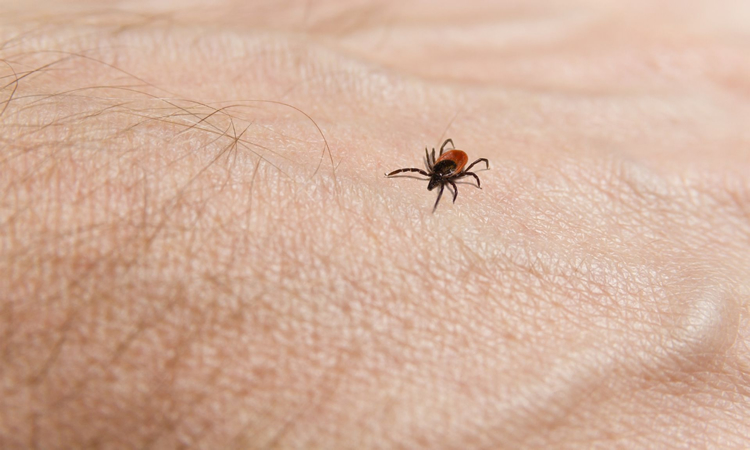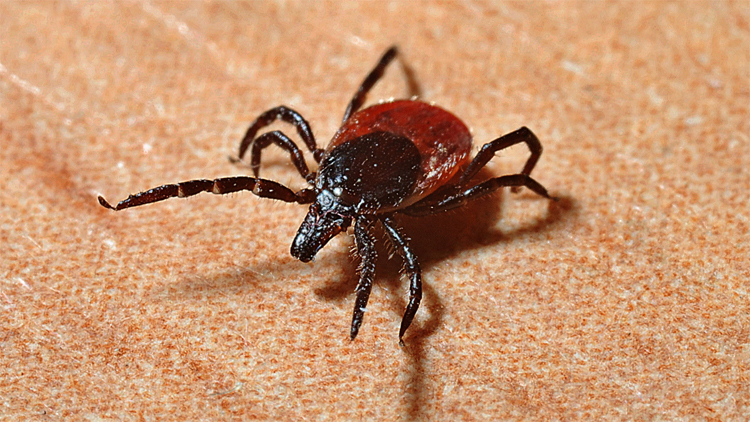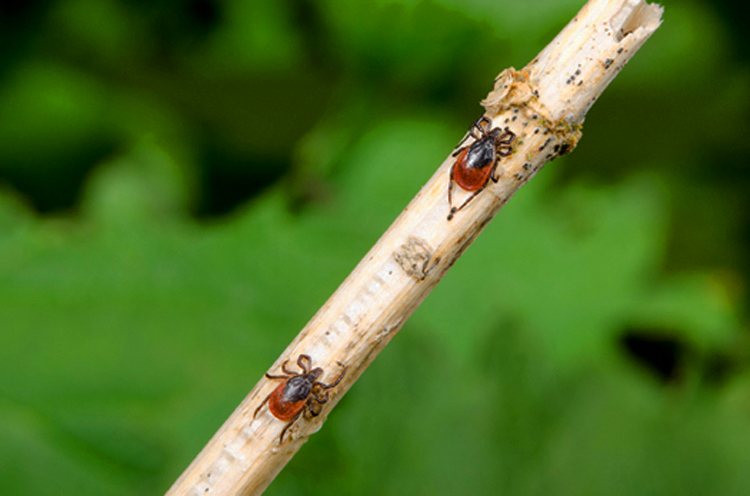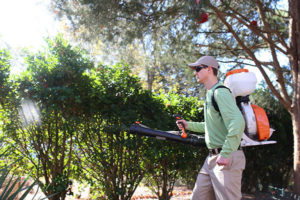Powassan virus is a rare tick-borne illness. It is primarily spread by deer ticks.
As you might know, it takes 24 to 48 hours of attachment for a deer tick to pass Lyme infection. If an engorged deer tick is found on a person or pet, there is a chance that the tick has been attached long enough to spread Lyme bacteria. But is the same true for the much rarer Powassan virus?

How long does a tick have to be attached to pass Powassan virus?
Experts believe that Powassan virus can be contracted in only 15 minutes. In a People Magazine article dated July 30, 2022, a family speaks about their experience with this potentially fatal disease. A three-year-old in Pennsylvania fell gravely ill after his mother found a tick on him. His mother explained the tick was, “non-embedded or engorged,” and so they went on about their day without giving much thought to the tick.

This family has prior experience with tick bites, as the boy’s older sister contracted Lyme disease a few years ago. The vigilant mother noted that a small red bump had formed on his skin a few days after finding the tick, but again, this was not particular cause for concern.
After two weeks passed, the boy’s daycare provider began to notice lethargy and said that he had also complained of a headache. Within a few days, a temperature of 104 spurred his parents to take him to the hospital. Due to an elevated white blood cell count, he was tested for viral and bacterial meningitis – both being ruled out. On day five of the boy’s hospital stay, an MRI confirmed a meningoencephalitis diagnosis. Within 15 hours of an IV of immunoglobulin, he woke up and began talking to his family. After spending nearly two weeks in the hospital, he was released. A few days later, doctors confirmed the Powassan virus diagnosis. Though this disease is most unfortunate, his case is one of fortune. That is because approximately 10% of sufferers with sever infection do not survive Powassan. Though his parents are hopeful about the future, there are aspects of the boy’s recovery that are yet unknown. A Facebook group about the family’s experience has been created but to raise awareness about the disease.
Hingham tick control will help you avoid ticks.

Encountering ticks can be likened to a game of Russian roulette. Why take the chance when you don’t have to? I recommend that families enlist the help of professional tick control providers to help keep ticks away from their homes. Even still, there is no tick treatment that is 100% effective. Therefore, I also recommend vigilance in performing tick checks after spending time outdoors. This is especially important for campers, hikers, gardeners, and children, who have been playing outdoors. Pets are family too – they must be checked for ticks frequently!


 The CDC also recommends augmenting your tick bite protection by treating your yard for ticks. Professional
The CDC also recommends augmenting your tick bite protection by treating your yard for ticks. Professional